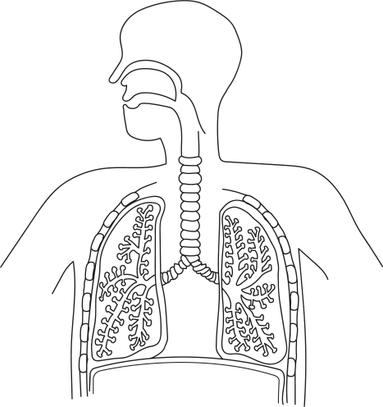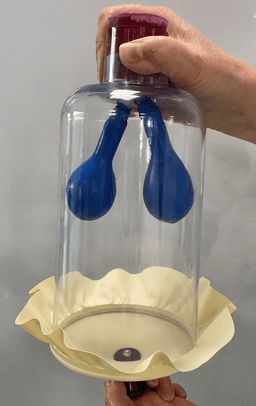Myths about teaching can hold you back
- Year 9
The human gas exchange system and breathing
I can describe how humans breathe, including the roles of different parts of the gas exchange system.
- Year 9
The human gas exchange system and breathing
I can describe how humans breathe, including the roles of different parts of the gas exchange system.
These resources were made for remote use during the pandemic, not classroom teaching.
Switch to our new teaching resources now - designed by teachers and leading subject experts, and tested in classrooms.
Lesson details
Key learning points
- The structures and functions of the gas exchange system in humans.
- The mechanism of breathing, including the role of muscles, to move air in and out of the lungs.
- A pressure model to explain the movement of gases during breathing.
Keywords
Gas exchange system - The human gas exchange system is a group of organs that work together to enable us to breathe.
Pressure - The molecules of a gas in a container collide with the walls of the container and this creates pressure.
Volume - The volume of a gas is the amount of 3D space it fills.
Inhalation - Breathing in is called inhalation.
Exhalation - Breathing out is called exhalation.
Common misconception
Thinking that the heart is part of the gas exchange system, linked to the lungs by "air tubes".
This lesson explores the organs that make up the gas exchange system and how air is moved into and out of the lungs,
To help you plan your year 9 science lesson on: The human gas exchange system and breathing, download all teaching resources for free and adapt to suit your pupils' needs...
To help you plan your year 9 science lesson on: The human gas exchange system and breathing, download all teaching resources for free and adapt to suit your pupils' needs.
The starter quiz will activate and check your pupils' prior knowledge, with versions available both with and without answers in PDF format.
We use learning cycles to break down learning into key concepts or ideas linked to the learning outcome. Each learning cycle features explanations with checks for understanding and practice tasks with feedback. All of this is found in our slide decks, ready for you to download and edit. The practice tasks are also available as printable worksheets and some lessons have additional materials with extra material you might need for teaching the lesson.
The assessment exit quiz will test your pupils' understanding of the key learning points.
Our video is a tool for planning, showing how other teachers might teach the lesson, offering helpful tips, modelled explanations and inspiration for your own delivery in the classroom. Plus, you can set it as homework or revision for pupils and keep their learning on track by sharing an online pupil version of this lesson.
Explore more key stage 3 science lessons from the Breathing and respiration unit, dive into the full secondary science curriculum, or learn more about lesson planning.

Content guidance
- Risk assessment required - equipment
Supervision
Adult supervision required
Licence
Prior knowledge starter quiz
6 Questions
Q1.Which of the following organs is involved in breathing in the human body?
Q2.Match the item to its description.
A group of tissues working together.
A group of organs working together.
A group of similar cells working together.
The building blocks of living organisms.
Q3.Put these in order of complexity, starting with the simplest.
Q4.In which living process is oxygen used to release energy?
Q5. provide support for the human body and hold the body upright.
Q6.Skeletal in the human body contracts and relaxes to move the skeleton.
Assessment exit quiz
6 Questions
Q1.What is the name of the organ system in the body that enables breathing to occur?
Q2.Put the following parts of the gas exchange system in order, to show the path that air takes when it enters the body.
Q3.Which part of the gas exchange system contracts and relaxes to change the volume of the lungs?

Q4.When there is a pressure in the lungs, air will move into the lungs.
Q5.What does the glass bell jar in this model of breathing represent?



